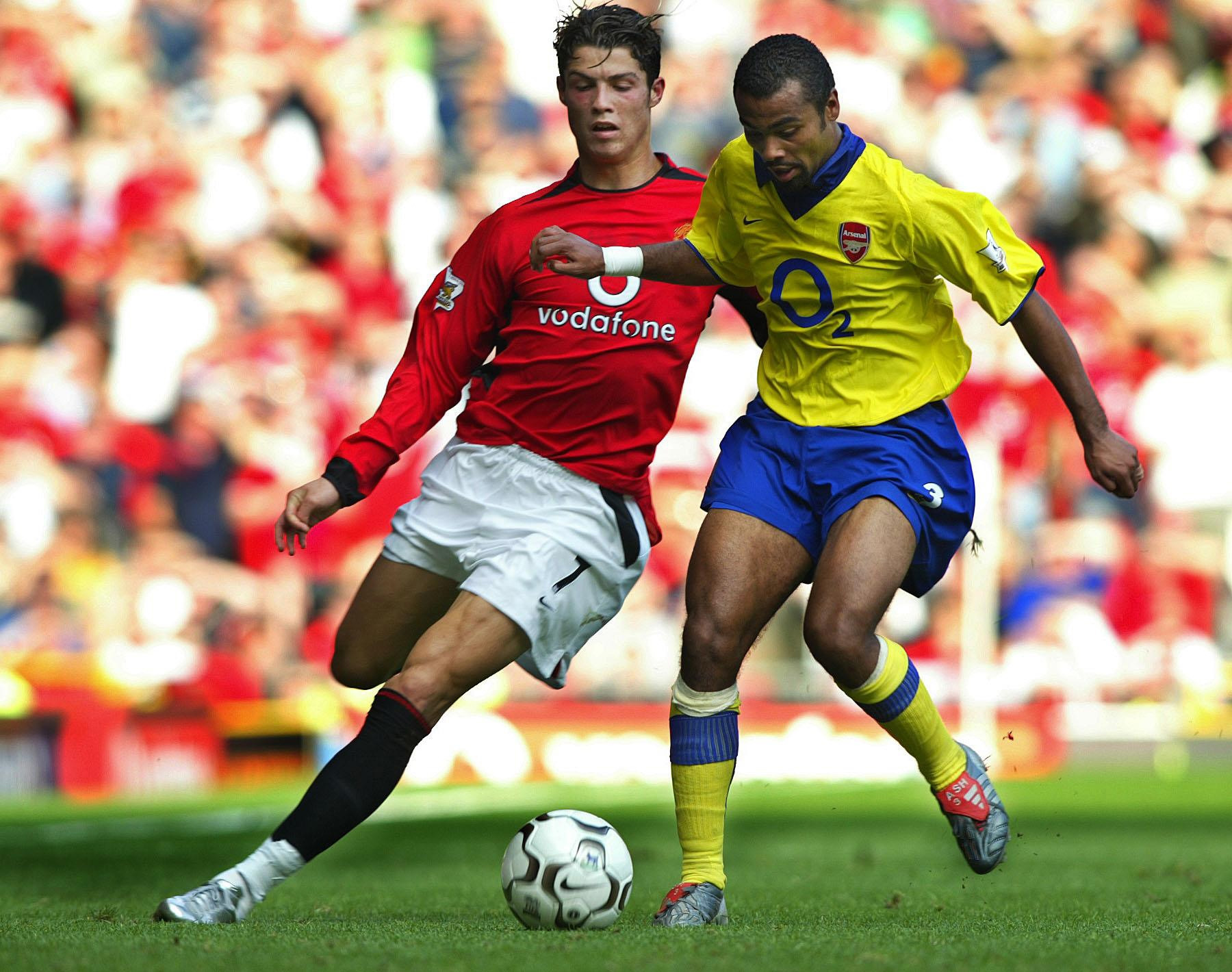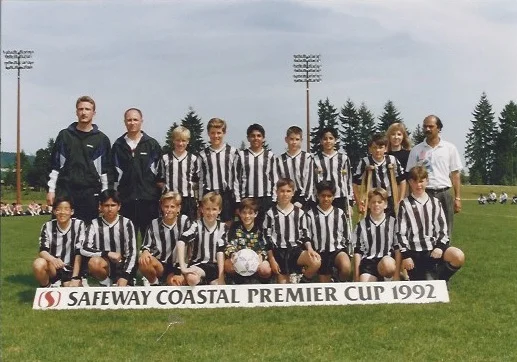The Art of Defending
Throughout my career I have been educated on how to tackle with several different techniques however, as with all elements of football, there has been an evolution in the art of the traditional tackle almost making it an obsolete form of preferred defending.
I remember training as a youngster and the ball would be placed at an equal distance between myself and a teammate. The whistle blew and we began to sprint full tilt at each other, proceeding to thump the ball with our laces as if it were shooting practice. Inevitably, one of us won the ball while the other went airborne into a puddle of muddy water. Looking back, I now see the reason my coach advised us to partner with someone of a similar stature - if not, it may have gotten ugly!
In youth football, I was taught to slide tackle. Once the opponent takes an erratic touch, slide in and kick the ball ‘somewhere’ meanwhile taking a boot in the stomach or perhaps an area even less pleasant. As there was no control gained from tackling on the ground, a scramble would ensue thereby pulling others out of position and creating space for one team – the other left exposed. Regardless of my dissatisfaction with the slide tackle, I admit that there are times where the last and mandatory resort is to go to ground, primarily to prevent a break-out from the opposition or to eliminate a potential scoring opportunity. If needs must, ensure that you are in a position to get a significant touch on the ball and direct it out of play or tactically manoeuvre the ball into your possession thereby switching the flow of play.
University football introduced me to the craft of the stud down tackle – a protection mechanism for preventing an injury to yourself. The negative was potentially putting your opponent at risk of serious injury. My coach pulled me to the side after I attempted one of the two aforementioned tackles to ensure that I protected myself through incorporating his methodology. I attempted it and failed miserably as the timing had to be impeccable, which it wasn't, and the attacker eased past my unbalanced frame. The studs also had to be at just the right height to avoid a yellow (or red) card and possible injury to your opponent - all in all, this is a terrible method of tackling.
As you may probably ascertain from the above, I don’t believe any of the methods taught are the most beneficial and advantageous for numerous reasons such as safety, gaining advantage or winning the tackle. I did have one coach, just one, throughout my entire career who emphasized and reiterated one phrase when defending, 'STAY ON YOUR FEET' - in all it's simplicity, those four words have resonated with me to this day.
My ultimate preference is the avoidance of the need to tackle through deploying the competencies of positioning, anticipation and decision-making to tact. In this day and age the pace of the game is incredibly rapid therefore surrendering your foot or going to ground will put you at a disadvantage. Staying on your feet, maintaining pace with your opponent until you can correctly anticipate a slightly erroneous touch or advantageous movement and readily use your body to gain advantage is the ideal. In another situation where the ball is between you and an opponent and you must take a stance, your speed of thought must be very rapid – can I win the ball without tackling and advance past my opponent? Will my opponent get to the ball first? – if so, do I take a risk or drop back to gain shape? The game of football is very simple - keep it that way by staying on your feet enabling yourself a full perspective of the pitch.
“If I have to make a tackle then I have already made a mistake.”
The above quote is from one of the most magnificent defenders in the history of football, Paolo Maldini. His assertion emphasizes the case that if you astutely position yourself and attentively observe the flow of the match, you will not have to tackle as you will anticipate the most opportune time to interject. This ability lays emphasis to Footyscout's philosophy that in order to achieve excellence, a player must incorporate enhancing tactical football intelligence into their overall development regime.
Even with the above statement, the reality is that mistakes happen in football and there will be times where you will need to tackle due to the situation that presents itself. If so, ensure you go into the challenge with strength, upright with the full weight of your body behind you. Use the inside of your foot keeping your leg strong and locked, not leaving yourself susceptible to injury due to hanging your leg. Regardless of your stature, if your tackling technique is as above you will have a good opportunity to win the challenge.
One of the best defenders of my generation was Ashley Cole. He went into battle with Cristiano Ronaldo, the greatest winger of our time, on numerous occasions and the match-up itself warranted a separate video camera. You can't defend players like Ronaldo by going to ground or jumping into tackles - they are simply too quick and their velocity of thought is too rapid. Cole had the innate ability to anticipate touches, stay on his feet and use his body to win the ball. He goes to ground only when he is 100% certain that he will win control of the football. His pace is that of a world class winger however, his greatest asset is an informed football brain. The match-ups between these two legends of the game presented skill, speed, tenacity and impeccable football nous. They rarely went into a dirty tackle as the competition was more comparable to a chess match encompassing the most sublime of physical specimens exerting their football intelligence and ability to the highest echelon. This isn't to say that they didn't go into tough tackles - they definitely did - but for the most part, they were fair, well-timed and appreciated by both competitors.
“Over the years I had some great battles with Ashley Cole, he does not give you a second to breathe. He was such a tenacious player when he was at his peak, quick, tough in the tackle. You knew it would never be an easy game.”
It is much easier to maintain an upright position when defending if the system a team deploys ensures that there is cover in all match situations. The Italians are renound for their rigidity in maintaining defensive shape and discipline. Clubs in the Serie A deploy many different formations and methods however, the one constant is a regimented approach in mitigating opposition scoring opportunities. In the 1950's, Serie A club Padova had a manger called Nereo Rocco who first deployed the role of a libero 'free defender' in a system titled Catenaccio. The libero's role was to collect stray balls and double-defend when necessary however, the main attribute in having a libero was the fact that there was comfort that if any of the defensive three got beat, the libero would be there to cover. This attributed to Italian coaches and players emphasizing stand-up defending. The libero is sparingly used in today's footballing methodologies however, the principle of defensive cover has been maintained. For example, if a team utilizes a back-four they should never be positioned in a single line but rather approximately at a 45° angle so that there is always cover should the uppermost defender get beat.
Defending is an art form in itself. The ability to enhance the mental football intelligence of a footballer will envelop the ability to anticipate quicker than the opposition, thereby increasing the possibility to attain control of the football without tackling. As a match progresses, the more control of the football and less physically gruelling battles a team endures will elevate their energy rather than deteriorating it. With that said, if a tackle presents itself approach it with confidence, technique and strength which will give you the greatest possibility of success.












